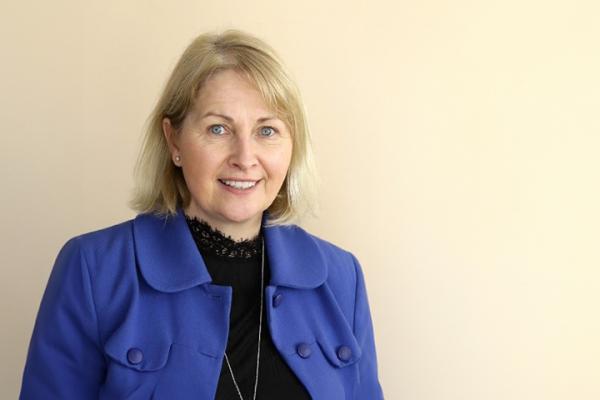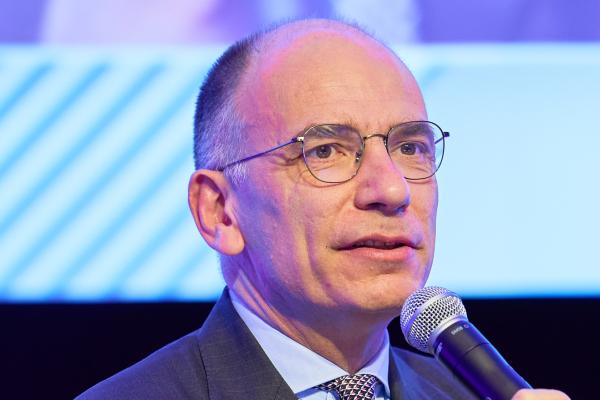Researchers forecast an Ebola vaccine and low-cost solar cells in 2015
Horizon asked researchers who have previously featured in the magazine for their forecasts on the scientific developments that could have a major impact in 2015.
The answers included developments in peer-to-peer networks, powerful computer simulations available on smartphones and tablets, gene-based cancer tests, and a better understanding of how to improve our mental capacities using technology.
Ebola vaccine

Dr Javier Moreno, researcher on the highly infectious disease leishmaniasis as part of the EU-funded MuLeVaClin project, hopes that the future will hold a vaccine against the Ebola virus. ‘A breakthrough for 2015 in my field, expected but no less important for that, will be the final development of an effective human vaccine against the Ebola virus infection, probably the most feared pathogen worldwide. Such a vaccine will have a direct and decisive impact in controlling the current epidemic in Africa and it will also represent an unprecedented advance to prevent future outbreaks of this highly pathogenic virus. This success will certainly promote the research and delivery of new vaccines for neglected tropical diseases that at this moment are not priorities for developed countries but represent an increasing threat for global health.’
New solar cells

Dr Nicolas Plumeré of the Ruhr-University Buchum, Germany, who has developed artificial leaves which can photosynthesise faster than natural ones, hopes that new solar cells using this technology will be created. ‘In the near future, we are hoping to see highly efficient electrical contacting of the natural photosynthetic protein in artificial devices,’ he said. ‘Such an achievement would underpin the realisation of a new type of solar cell at potentially extremely low costs and hence democratise their widespread use in locations that are unsuitable for the current photovoltaic technology.’
Peer-to-peer networks

Xavier Damman, Belgian co-founder of Storify, believes that peer-to-peer (p2p) networks are the way forward in the future. ‘They disrupted the way we distribute music and they are now disrupting the way we hail a cab with Uber, or book a room with AirBnb,’ he said. ‘Expect more p2p networks that will empower consumers to become producers of their own - soon in an industry near you. The winners will be the ones who understand that the value creation is shifting from producers to the platforms that enable producers to thrive.’
Better simulations

Abel Coll, project coordinator of the VELaSSCo big data project at CIMNE, the International Centre for Numerical Methods in Engineering, hopes that high-performance computing (HPC), big data and cloud computing will enable new simulation devices and innovations to be created which will make our lives easier. ‘The convergence between HPC, big data and cloud computing enables a new generation of simulation products and services … implemented in light systems such as mobile phones or tablets, from the computational core running in cloud or HPC facilities,’ he said. ‘This drive towards a democratisation of simulation solutions provides the scientific and engineering community with streamlined and affordable access to high-level simulation tools. Even more, this easy and immediate access to simulation solutions is the door for a myriad of non-expert users, which will make a big technological and business difference.’
Closed-loop stimulation

Dr Ana Maiques, third runner-up of the EU Prize for Women Innovators in 2014 and CEO and co-founder of Starlab, a research and innovation company that is focused on the fields of space and neuroscience, is excited about future developments in closed-loop systems relating to the treatment of brain disorders. ‘For me, the breakthrough in brain stimulations would be to see how we are advancing in closed-loop systems,’ she said. ‘We understand the future of treating brain disorders as personalising and combining different technologies, like EEG (electroencephalography-brain monitoring) and non-invasive brain stimulation, having a real-time dynamic system to understand and target brain networks. This could have tremendous implications in central nervous system-related pathologies.’
Sports doping tests

Dr Olivier Rabin, science director of the World Anti-Doping Agency (WADA), hopes that in the coming years we will see an implementation of gene doping testing and the development of non-invasive solutions for routine blood testing. Gene doping involves taking a gene that can enhance an athlete’s performance, for example by increasing blood production. This can be highly dangerous because the risks of gene doping are largely unknown.
Genetic diagnostics

Dr Saskia Biskup, who scooped the EU Prize for Women Innovators 2014, and who is the founder and CEO of CeGaT, a biotech start-up for genetic diagnostics, believes that cancer treatment will soon use genetic information more effectively. ‘Currently, cancer treatment is based upon the origin of the tumour cells and only in a few cases considers the genetic mutations driving the tumour progression. We know that knowledge about the genetic fingerprint of the tumour in the majority of cases gives valuable input for choosing the best therapy. This helps to avoid unnecessary side effects and to increase survival,’ she said.
Climate deal

Dr Marc von Hobe, coordinator of the EU-funded project RECONCILE which contributed to the first detection of a hole in the ozone layer over the Arctic in 2011, said: ‘The climate system is infinitively complex, and we are still far from understanding all processes and feedbacks at play. Nevertheless, the new IPCC (Intergovernmental Panel on Climate Change) report makes it clear that we know two things with certainty: global warming is man-made, and it will continue. Therefore, the breakthrough that is needed and that will make a real difference is not a scientific one: we need to start cutting greenhouse gas emissions now. The 2015 UN climate summit in Paris provides yet another opportunity to reach an international agreement in that respect.’
Space radio

Professor Heino Falcke, one of the principal investigators of the EU-funded BlackHoleCam Project, wants there to be new discoveries about radio bursts from space in 2015. ‘We may better understand the nature of the mysterious Fast Radio Bursts (FRBs) – singular radio flashes that last for a few milliseconds at best and which have been claimed to come from the early cosmos,’ he said. ‘Are these indeed Blitzars – neutron stars collapsing to a black hole, exceptionally bright pulsars, or just some strange atmospheric phenomenon that has been able to fool radio astronomers? Explanations are plentiful and range from the exotic and fundamental to the more dull. More radio astronomy experiments are gearing up to catch these enigmatic flares and the one which is able to pin down the origin of FRBs will either make a historic discovery or lay an aspiring new field to rest.’
Protected oceans

Pierre-Yves Cousteau, marine conservationist, CEO of Cousteau Divers and the son of world-famous marine conservationist Jacques Cousteau, hopes that the world reaches the objectives of the Convention on Biological Diversity (1992) of achieving 10 % of effectively protected and well-managed Marine Protected Areas. ‘We are running five years late on this important milestone with barely 5 % of the oceans protected today,’ he said. ‘Fisheries are collapsing, oceans are acidifying and pollutions of various sorts are sending marine life down the drain, jeopardising food security and biodiversity. Achieving this milestone would not solve all of the ocean’s problems, but would hopefully ensure sufficient resilience of marine ecosystems to withstand anthropogenic pressures and prevent a looming ecological and social disaster.’
Cognitive insight

Dr Roi Cohen Kadosh, researcher and lecturer at the Department of Physics, Oxford, thinks that we will have more insight into how our brains function and, specifically, learn, in the near future. ‘The ability to learn new skills and to advance our cognitive capabilities is fundamental for our individual life and the global society,’ he said. ‘There is a current debate and unclarity whether this is achievable and what are the exact factors that allow successful learning and enhanced cognition. A better understanding in the fields of neuroscience and psychology on how we can improve learning and cognition in typical and atypical populations (for example those with learning difficulties), will have a significant impact in different areas including education, the working place, the military, and rehabilitation.’
Gene therapies

Professor Martin Fussenegger at the ETH University Zurich said: ‘The only wealth is health. New treatment and drug discovery strategies are urgently needed.' Prof. Fussenegger’s research team developed the first gene network which could be controlled by thoughts earlier this year. This means that in the future, signals from the brain could release drugs into the body, revolutionising how we receive medication. ‘The current treatment concept of taking pills at regular intervals goes back to Paracelsus and is centuries old,’ Prof. Fussenegger said. ‘Although this strategy has been the foundation of modern medicine, it cannot provide solutions for all medical indications. Also, some diseases, such as bacterial infections that were apparently under control using antibiotics, strike back with increasing prevalence of antibiotic-resistant pathogens. The discovery of novel antibiotics as well as quantum leaps in gene- and cell-based therapies would be my wish for 2015 – or at least global consensus, initiatives and investments to work towards that goal.’




